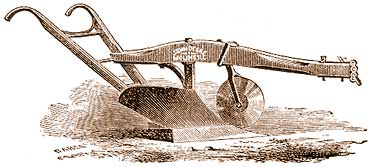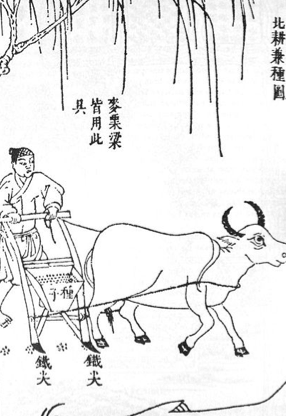
The Iron Plough: Sixth Century BCE
The creation of the iron plough was one of the greatest advantages China had over the rest of the world. Their early innovation freed them from having to use antiquated ploughs and allowed for greater agricultural productivity. Over the coming centuries, the Chinese plough would see many great improvements such as cast-iron ploughshares, more durable frames, and adjustable struts to regulate the ploughing depths. When the iron plough finally reached Europe, it was immediately copied and became the driving force of the European agricultural revolution.

